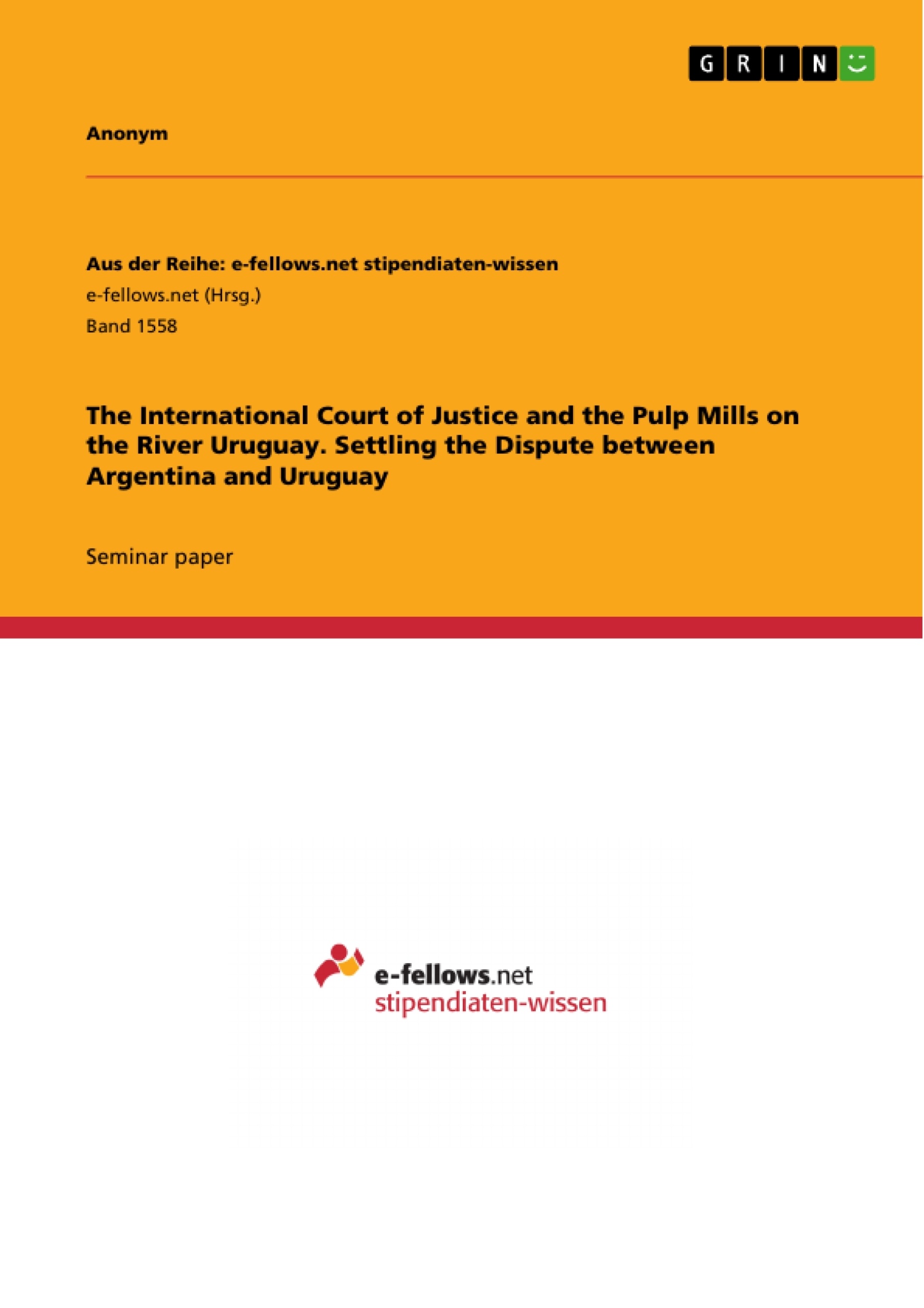On 30 April 2005, Argentine citizens started a five-year blockade of the Libertador General San Martín Bridge which connects the Argentine city of Gualeguaychú with its Uruguayan neighbor city Fray Bentos. The citizens feared severe environmental damages caused by two pulp mills which were to be constructed on the Uruguayan side of the Uruguay River which separates the two countries. In 2006, Argentina referred the dispute to the International Court of Justice (ICJ).
The judgment, delivered on 20 April 2010, has been described as the most significant one in international environmental law since Trail Smelter.
It is undisputed that the judgment made some significant contributions to the progress of international environmental law. I will argue, however, that the Court also missed some great opportunities to develop international environmental law and to establish itself as a Court capable of dealing with highly scientific issues. First, I will discuss the Court’s reasoning concerning the burden of proof and its use of expert evidence. Second, I will debate the Court’s recognition of an Environmental Impact Assessment (EIA) as part of the corpus of general international law.
Table of Contents
- Introduction
- Facts
- Holdings of the Court
- Procedural obligations
- Substantive obligations
- The Court's capacity to deal with environmental issues
- Reversal of the burden of proof
- The role of expert evidence
- Environmental Impact Assessment: An explicit statement?
- Conclusion
Objectives and Key Themes
This case note examines the 2010 International Court of Justice (ICJ) judgment in the case concerning Pulp Mills on the River Uruguay (Argentina v. Uruguay). The author argues that while the judgment made significant contributions to the progress of international environmental law, the Court missed opportunities to develop the field further and to establish itself as a competent authority for dealing with scientific issues. The case note critiques the Court's handling of the burden of proof and expert evidence, and explores the Court's recognition of an Environmental Impact Assessment (EIA) as a part of general international law.
- The Court's reasoning regarding the burden of proof and its use of expert evidence
- The recognition of an Environmental Impact Assessment (EIA) as part of general international law
- The Court's potential to contribute to the development of international environmental law
- The ICJ's capacity to deal with scientific issues
- The application of the 1975 Statute of the River Uruguay
Chapter Summaries
- Introduction: This section provides an overview of the case, highlighting its significance in international environmental law. The author outlines the background of the dispute and the central arguments of the case.
- Facts: This section presents the key facts of the case, including the construction of the pulp mills, the concerns raised by Argentina, and the role of the Administrative Commission of the River Uruguay (CARU).
- Holdings of the Court: This section summarizes the Court's findings on the procedural and substantive obligations under the 1975 Statute. It discusses the Court's interpretation of the obligations to inform, consult, and negotiate, as well as the application of the burden of proof principle.
- The Court's capacity to deal with environmental issues: This section delves into the Court's handling of specific environmental issues, including the reversal of the burden of proof, the role of expert evidence, and the recognition of an EIA as part of general international law.
Keywords
The case note focuses on the key concepts of international environmental law, procedural and substantive obligations, the burden of proof, expert evidence, and Environmental Impact Assessments (EIAs) in the context of transboundary watercourses. It explores the role of the ICJ in the development of environmental law and its capacity to address complex scientific issues. The case note further highlights the 1975 Statute of the River Uruguay, the Administrative Commission of the River Uruguay (CARU), and the dispute between Argentina and Uruguay over the construction of pulp mills.
- Arbeit zitieren
- Anonym (Autor:in), 2014, The International Court of Justice and the Pulp Mills on the River Uruguay. Settling the Dispute between Argentina and Uruguay, München, GRIN Verlag, https://www.grin.com/document/301425



